
Citroën C6 Saloon review

At a glance
| Price new | £26,825 - £39,700 |
|---|---|
| Used prices | £644 - £3,767 |
| Road tax cost | £305 - £735 |
| Insurance group | 41 - 45 |
Get an insurance quote with

|
|
| Fuel economy | Not tested to latest standards |
| Range | 396 - 665 miles |
| View full specs for a specific version | |
Available fuel types
Petrol
Diesel
Pros & cons
- Imposing automotive art
- Impressive refinement
- Comfortable interior
- Compromised chassis
- Poor reliability
- Flawed technology
Citroën C6 Saloon (06-12) rivals
Overview
Few cars inspire emotions the way a big Citroen can, or at least used to. From the original 1955 DS, to the space-age 1974 Citroen CX and the sleek yet practical Citroen XM, the French firm’s range-topping models offered attention-getting looks and unmatched ride comfort akin to the best cutting-edge luxury cars today.
When the XM departed at the end of the 20th century, the Citroen C6 Lignage concept offered a breathtaking glimpse ahead at the next generation, yet it took six years for the concept to reach showrooms. The first big break with tradition was the lack of a practical estate car version; Citroen sold eight-seater models of the DS and CX, and a cavernous XM Estate, but by the time the C6 arrived the MPV had become the preferred transport of large families, and the Citroen C5 Estate offered exceptional load-carrying potential.
As a result, a Citroen C6 is a very focused, single-purpose used car. It’s a four-door hardtop saloon with frameless doors, and the only significant option for practicality is the Lounge Pack option. Normally a five-seater, this option makes it a four-seater (though the centre belt remains, it’s not comfortable) with powered reclining rear seats. It also removes the through-loading facility from the saloon boot.
With no need to accommodate practical considerations or a wide market appeal, the C6’s interior is wholly focused on style and comfort. Sometimes, in that order. It has few direct rivals, but new owners might have been tempted by the striking new Mercedes CLS, the Jaguar XF or XJ (X350), or a Chrysler 300C. Used Citroen C6 buyers looking for long motorway refinement should also look at second hand Jaguar XJs, whereas for uniquely French style the Renault Avantime or Vel Satis come from a similar set of big-car aspirations.
Used Citroen C6 buying guide
Before considering a used Citroen C6, bear in mind that over a seven-year production run only 23,400 cars were produced. In Britain, about 1,000 found homes – eventually. Usually discounted, many are in the worst VED bands for road tax, and supported by dealers more used to customers with hard-working Xsaras or bargain-basement C1s, they’ve often been neglected or damaged.
Replacement parts are expensive and already becoming hard to obtain just 12 years after the last C6s were made. As such, it’s best to consider a C6 not as a useful, large diesel car but rather a commitment to a unique piece of transport. More so than DS, CX or XM buyers, who often want a distinctive car, but are taking on much simpler engineering.
Choosing a C6 should place condition and service history first, and then weigh up if you want the ‘TGV-style’ rear seats that formed a big part of its unique identity at launch. From a driver’s perspective, they’re irrelevant, but passengers naturally love them and they are better quality than the standard item. Exclusive trim is the obvious choice and easiest to find, yet many Lignage cars have options to make them almost comparable.
Although the 3.0-litre petrol V6 is hard to find, it’s the only worthwhile option for ULEZ or clean air zones and it may be worth looking at Australian or Japanese imports to get one now. The V6 diesel was great when new, but it is expensive to maintain properly.
The one to have if you don’t mind paying ULEZ is the 3.0 HDI 240 introduced in 2010. It is very rare – it’s not only more powerful and arguably, more reliable, it has cheaper VED as well. For the cheapest option, the 2.2-litre HDI manual is not as overwhelmed by the C6 as you might expect, but it’s better in a Citroen C5 Mk2.
Citroen C6 known faults and common problems
For a car that only sold 1,000 units in the UK, it’s revealing that we were spoiled for choice choosing 10 issues to focus on, rather than struggling to find enough to talk about. Forewarned is forearmed; if you want a C6 these are points to maintain to ensure you enjoy the car as much as possible, but we advise against buying ‘a project’ in the hope that you can fix it quickly or easily unless you have a lot of experience with this generation of Peugeot and Citroen tech.
If possible you want to take a long test drive with the C6 – at least an hour, and including some motorway and congested town driving. It’s worth paying for the seller’s time and fuel doing this, as it will give you time to spot potential issues. It will also let you understand the C6’s unique character and if this is a car you like, love, or find awkward.
If you don’t love it, don’t buy it – here are 10 reasons why merely liking it might not be enough.
1. V6 HDI diesel – EGR, turbo and DPF
The 204hp 2.7-litre V6 diesel (and later 3.0-litre 240hp version) will be familiar to Jaguar and Land Rover owners, but it’s mounted transversely in the C6’s nose. This means restricted access for most major service items such as timing belt, fuel pump, EGR valves, turbochargers and so forth.
Many C6s on the used market will have ‘engine light sometimes on, drives okay’, but don’t just ignore it. The engine light rarely comes on without a reason. You’ll definitely want a handheld diagnostic code reader for this car, but you need Lexia and a skilled user to truly understand hidden C6 issues. If you’re serious about C6 ownership, join the Citroen Car Club and ask if anyone lives nearby who can help.
As an early second hand car with sophisticated emissions control hardware bodges are common. Owners often fix C6s by bypassing EGRs, hollowing out the DPF, or wires to fool ECUs into ignoring faults. Even cars serviced within Citroen parameters can be considered ‘neglected’ – typical of many diesel engines of this era, the C6 HDI really needs more frequent oil and filter changes than the sales-friendly ‘long service interval’ that manufacturers pushed for.
On the test drive, juddering or vibration that feels like a misfire can suggest sticking EGR valves or injector issues. Afterwards, look for shining/damp oil spray/leaks all around the engine bay, particularly on the turbo and intercooler pipework low down at the front near the radiator. Take the dipstick out and don’t just check the level, sniff for diesel – this engine is particularly prone to oil dilution with catastrophic results.
These engines use Eolys additive fluid which should be topped up during services, rather than user-fillable AdBlue, and DPF issues are common on cars with low mileage.
2. Suspension – LDS, spheres and sensors
Unlike previous Citroens that use a fully-pressurised setup that balances the corners of the car with fluid, the C6 uses four independent damper/spring units that vary pressure individually under computer control.
Called Hydractive 3+, the same system is used in later C5s; the C6 is heavier. On motorways you may feel some diagonal movement, but the car should ride softly and isolate you from all ripples and imperfections (it is not immune to potholes). It uses different oil (LDS) to the classic ‘green blood’ LHM of Citroens – check the level and condition (it should be light orange) at the reservoir under the bonnet.
If the ride is hard, it can be down to a failed sphere (the metal bulb that contains pressurised gas – this is what the fluid presses against to provide springing), a sticking or dirty valve, or a bad electrical connection. Spheres will feel bad all the time, and will thump over speedbumps, whereas other failures might be intermittent; a suspension sphere is a consumable and front ones are relatively easy to replace.
If the ride is soft at high speed, or feels uneven in Sport mode, then there is likely to be an electrical issue or a stuck valve. It could be that a ride height sensor is detached, but it’s equally possible that the steering angle sensor isn’t working – do the headlights ‘turn’ to match the steering? Don’t be fooled by a fault code as the car’s software sometimes generates it when everything is working.
Cars that have hit potholes or been in an accident may also display suspension issues due to damage to the strut itself. A replacement complete strut, including fitting, can cost over £1,000. Raise and lower the suspension a few times (you can set the height then get out of the car), and watch for juddering/sticking movements while listening for scraping or squeaking noises.
3. Automatic gearbox – slow response may be normal
The C6 uses a proven Aisin-Warner gearbox that’s fitted to many cars around the world from many brands. However, it’s got the touch of Citroen in how it’s installed and the components around it, so don’t expect it to be reliable unless you’re proactive about maintenance.
On a test drive, if it shudders or jolts between gears then it’s probably on the way out, or has had a problem that hasn’t been fixed properly. Aside from neglected oil changes, the main culprit is the oil cooler. This is part of the car’s main coolant circuit and when it fails, will mix gearbox oil and coolant much like a failed head gasket, with mucky brown-red foam and ATF in the coolant bottle.
While it can be ‘fixed’ with a new cooler and a flush, it’s often found after the damage inside the gearbox has occurred. Be wary of a C6 that looks like it has coolant stains or new hoses and no invoices suggesting a straightforward overheating/preventative replacement.
Do not worry if an otherwise smooth and quick-shifting gearbox is slow to respond at junctions or pulling away. It’s designed that way to protect the transmission from the V6 diesel’s torque.
4. Windows and doors – locks, drops, and cold
The Citroen C6 uses frameless double-glazed side windows that drop before opening. If not defrosted properly, the mechanism can wear and get rattles – and in some cases, the glass can crack. If the door handle sensor isn’t working then it is possible to open the door against the frame in an emergency, but the window should be lowered before closing (the windows should also be lowered before working on the battery or electrical systems).
Door locks may fail due to the lock module itself or the wiring in the door. Check that after locking, the door can’t be opened – particularly if the car doesn’t flash the indicators afterwards to warn you a door is not locked.
When driving, the car should be uncannily quiet with all the windows closed. Even on high mileage examples we’ve driven there is minimal wind noise and very little road noise on good, correct specification and inflated tyres.
Which makes it much easier to listen for suspension wear…
5. Balljoints and bushes – worn suspension
Citroen based the C6 on established Peugeot components from the 607 and 407 Coupe, including the front suspension which is an upgrade over the simple struts of the XM. Design-wise it’s a great system, but the engineering wasn’t upgraded to cope with the near-two-tonne weight of the C6.
Front suspension bushes wear quickly leading to uneven tyre wear, twitchy cornering, and a bit of wander on the motorway (subtle, but at odds with the C6’s impeccable long-distance serenity when new). Balljoints wear out as well, and these rattle and chatter. Turn the steering at standstill and feel for a gentle vibration, with corresponding rattle.
You will hear worn links and excessively worn balljoints rattling better if you open the windows when driving in built-up areas. It’s harder to hear them at high speeds.
6. C6 electronics: seeing the light – displays and lighting
Before embarking on C6 ownership bear in mind this car as a lot of electrical systems. The battery is mounted in the boot on the left side, and isn’t fun to change – many owners or garages end up putting a smaller one than the original specification, and the resulting marginal operation of the car’s ECUs is a source of misery and wasted bills.
Check that the battery on a V6 is at least 100Ah and ideally, 950 CCA. The 2.2-litre may be okay with 95Ah and 800 CCA.
Walk around and verify that all the exterior lights work. The day running lights look like small foglights next to the indicator (the foglights are the round ones) in the bumper, and there should be subtle amber lighting in the upper part of the headlight. Inside, there are ambient lights above the door bins which are easy to see if you look up at the handles from the bottom of the door.
The dashboard is prone to failure – check all the segments work (the section for adaptive cruise was never implemented), and where fitted, make sure the head up display works as well. The central screen for navigation (where fitted), radio and trip computer varies with year, and Lignage models have a small monochrome display in a large fascia panel.
7. Heating and ventilation – check both sides
The C6’s heater module is another weak spot. It’s also horrible to get into to repair, so avoiding buying a bad one is the best option. Check that you can get hot air on both sides, and that you can get the left and right sides of the car to blow cold and hot air separately.
This is a good time to make sure the fan operates at all speeds. By design the C6 is programmed to run the fan slowly, so if you don’t hear it working on a test drive in ‘Auto’ that is how it should be.
Problems with the heater may not be due to the distribution and temperature control, they could also indicate issues with the heater matrix. Feel the front carpets for damp and remember to make sure the coolant is correct in spec and colour (if you mix coolant types it can form a gel that clogs the heater matrix, engine or gearbox coolers).
On Exclusive models check the rear ventilation controls work. If the air conditioning is in good order, the centre cubby is also cooled – no more melted Mars Bars in summer.
8. No spoilers, please – the C6’s boot spoiler
This one is just for the V6s, as 2.2-litre models have a fixed, small spoiler on the boot. If you want to check that the automatic spoiler can raise and lower, flick the wiper stalk down right after switching the car off. This puts the wipers in the upright position to change the blades, and also raises the rear spoiler for cleaning.
It will return to the normal position after driving. Or at least, it should. Like many aspects of the C6, it’s connected to several systems, and not all of them like to work at once.
9. 2.2 HDI – manual gearbox and clutch
The four-cylinder C6 is often considered the ‘safe’ bet, as the 2.2-litre diesel offers more torque than the rare V6 petrol and has enough room to work on it without too much difficulty. Choosing a manual model eliminates a few problems in one go – but not all.
Problems with this generation of HDI are well documented, including injector leaks, turbocharger wear, and DPF and other emission-system problems. However, the main area of concern for a well-maintained C6 2.2 is the gearbox – it’s a heavy car with a lot of components underneath.
Feel for judder when pulling away and listen for clonks, rumbles or squealing which could indicate the dual mass flywheel is failing. The hydraulic clutch can be slow to react and may stick or feel inconsistent in biting point if the seals are worn, and if there’s vibration from the engine when driving at cruising speed that’s another indicator of worn flywheel and clutch components.
Replacement parts are not too expensive, but the labour involved (before any related damage from the work, such as broken height corrector links, is discovered) will run to four figures alone. Clutches are unlikely to last much beyond 120,000 miles on a manual C6 so buy with care if there’s no evidence of recent replacement.
10. Brakes, handbrake and everything else
As you can see we’ve reached 10 points and haven’t got close to covering all the potential issues. For the final point – does the handbrake work? The electronic module is over four figures and essentially, unique to the C6 so finding a used or alternative part is difficult. Replacement brake cables are available, but if the module has failed electronically expect a big bill and a lot of hassle.
The brakes on a C6 are not like a traditional oleopneumatic Citroen. They do stop the car well in an emergency situation, but they feel slow to respond and ‘bite’, and have quite a long pedal travel. It’s easy to drive a C6 smoothly, but it can feel rather hurried when stopping. Discs are vented front and rear, and replacement brakes are relatively expensive and needed often. Beware any issues with sticking calipers, failing brake hoses, or squeaking/worn pads and discs.
For more detail on the Citroen C6’s issues keep reading the full review, as we’ve included some specific points to look for in the relevant sections alongside our original review of Citroen’s last truly distinctive big car.
What’s a Citroen C6 like to live with
Keep reading for our full review of the Citroen C6, including its comfort, performance and handling, practicality and running costs – then read our verdict to find out if we recommend buying a used Citroen C6 depending on your priorities.



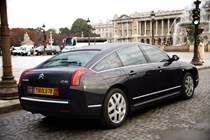
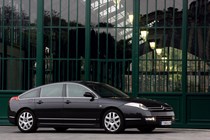
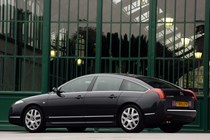
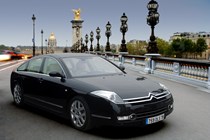
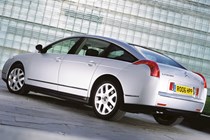
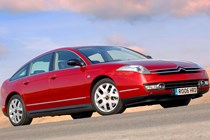

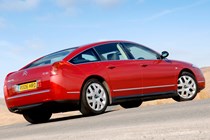
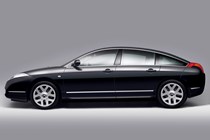
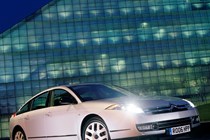
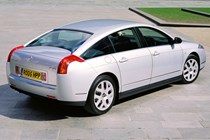
.jpg)
.jpg)
.jpg)
.jpg)
.jpg)
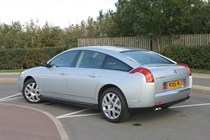
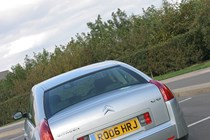
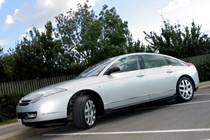

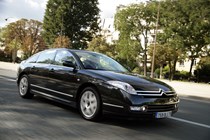
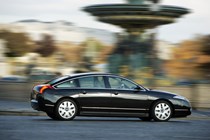
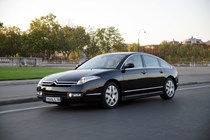
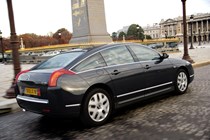
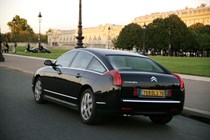
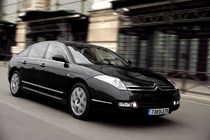
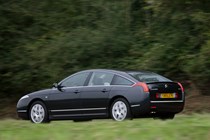
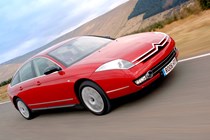
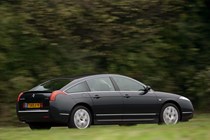
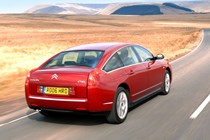
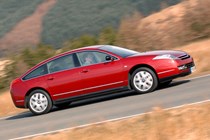
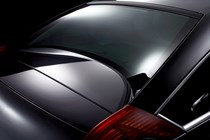
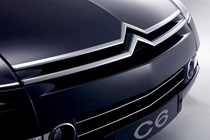
.jpg)
.jpg)
.jpg)
.jpg)
.jpg)
.jpg)
.jpg)
.jpg)
.jpg)
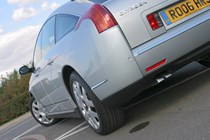
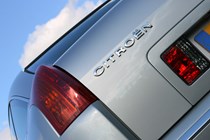
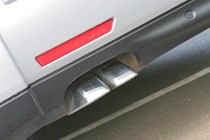
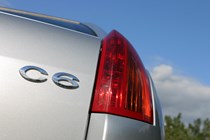
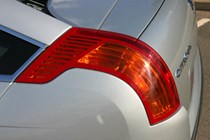
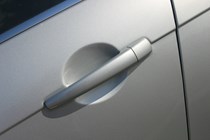
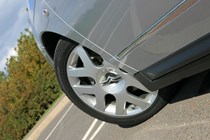
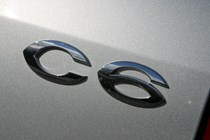
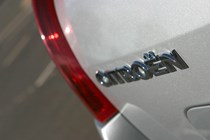
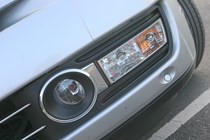
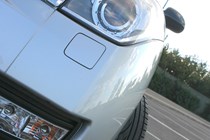
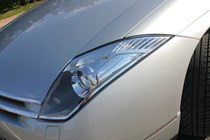
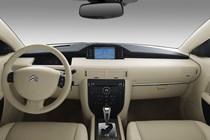
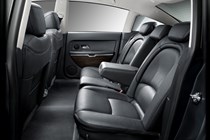
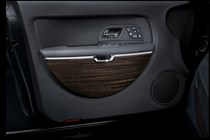
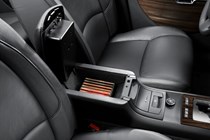
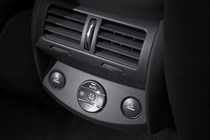
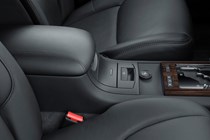
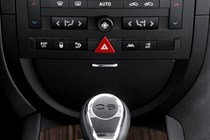
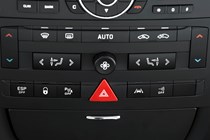
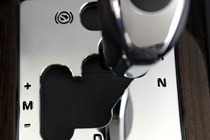
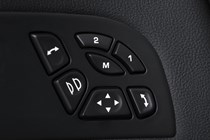
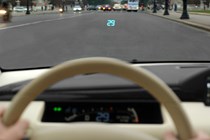
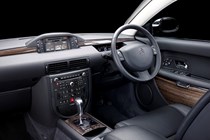
.jpg)
.jpg)
.jpg)
.jpg)
.jpg)
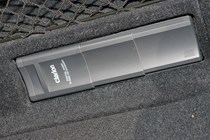
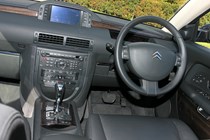
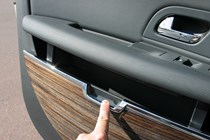
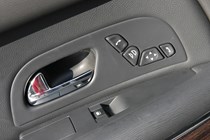
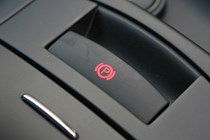
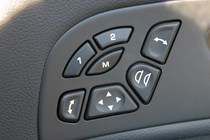
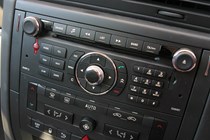
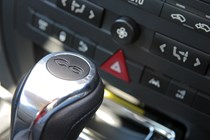
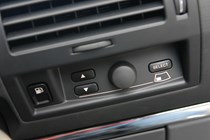
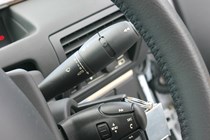
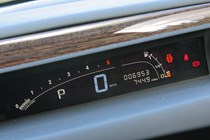
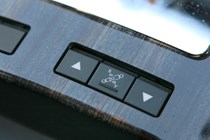
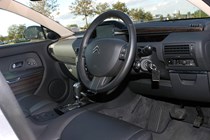
.jpg)
.jpg)
.jpg)
.jpg)
.jpg)
.jpg)
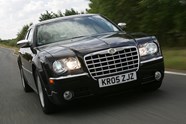
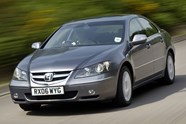
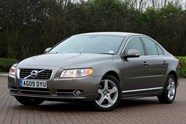












.jpg?quality=50)
.jpg?quality=50)
.jpg?quality=50)
.jpg?quality=50)
.jpg?quality=50)

















.jpg?quality=50)
.jpg?quality=50)
.jpg?quality=50)
.jpg?quality=50)
.jpg?quality=50)
.jpg?quality=50)
.jpg?quality=50)
.jpg?quality=50)
.jpg?quality=50)
























.jpg?quality=50)
.jpg?quality=50)
.jpg?quality=50)
.jpg?quality=50)
.jpg?quality=50)













.jpg?quality=50)
.jpg?quality=50)
.jpg?quality=50)
.jpg?quality=50)
.jpg?quality=50)
.jpg?quality=50)